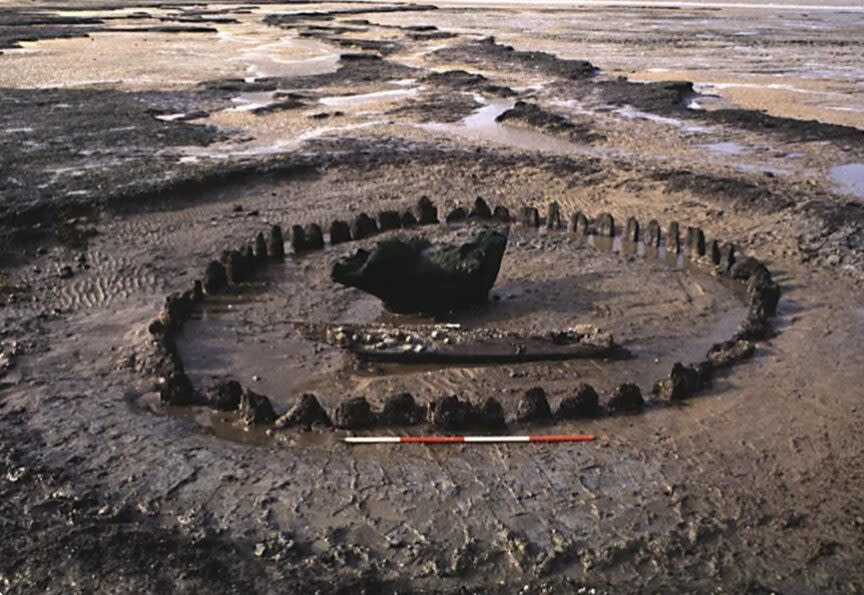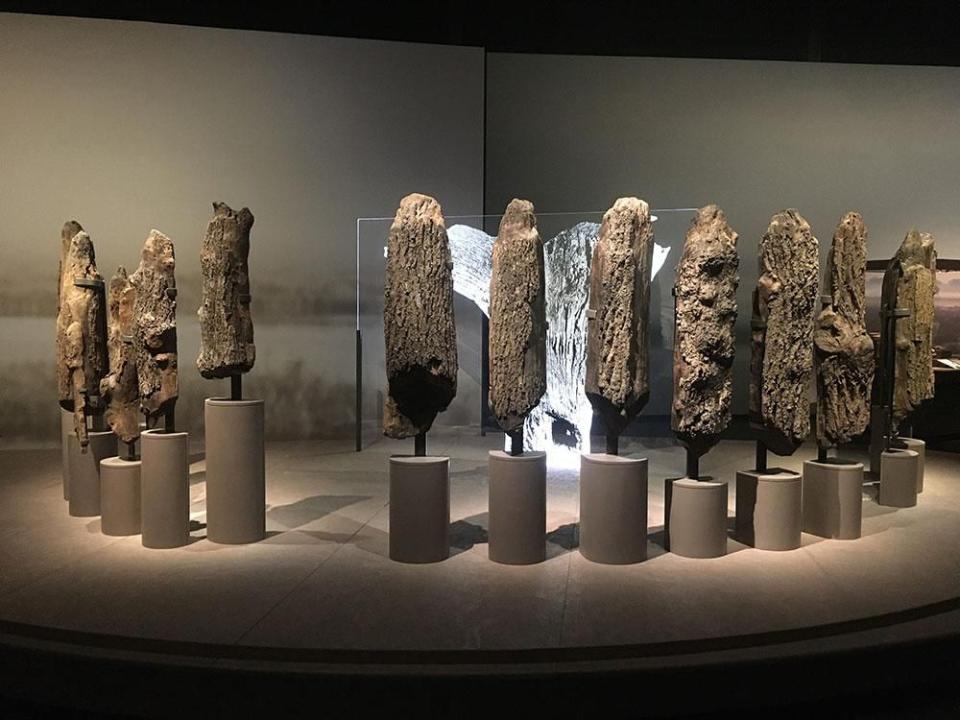Seahenge Mystery Solved
Seahenge is a 4,000-year-old circle of timber on the UK’s Norfolk coast. Since its discovery in 1998, people have asked: What was its purpose? New research suggests it was built for rituals to deter harsh winters.
The ancient structure comprises 55 split oak trunks surrounding an upside-down oak stump. Because it sits in the middle of a salt marsh, the surrounding peat has preserved the wood. Back in the Bronze Age, it would have been visible at all times. But since its construction, sand and mud built up around it, burying it from our view.

Amateur archaeologist John Lorimer first spotted the mysterious circle of wood in 1998. He first saw a Bronze Age axe poking out of the sand. Over time, he watched the ring of timber gradually appear through tidal erosion of the coastline. Officially, it’s called Holme I since it stands near the village of Holme-next-the-Sea. However, unofficially it was dubbed Seahenge because of its resemblance to Stonehenge.
Baffled historians
Archaeologists excavated Seahenge a year after its discovery. Now preserved in wax, it is on display in Norfolk’s Lynn Museum. The site has baffled historians, archaeologists, and the public for over two decades. Some suggested it was a memorial to a warrior. Others said it was used for sky burials, that the dead were placed within the timber circle. Carrion-eating birds would peck at them and carry them away.

A new study suggests that the prehistoric site was built after a period of extreme cold at the end of the third millennium. It and another circular structure nearby (Holme II) were part of a ritual to try to prolong warm summer weather. Holme II was built the same year as Holme I and is just 100 meters away.
In the new study, archaeologist David Nance explained that the Seahenge timbers were felled in the spring. The timbers probably lined up with sunrise during the summer solstice. That was also a period of severe winters and late springs, stressing those early coastal societies.
The cuckoo myth
Nance believes that the ancient structure mimics a cuckoo’s cage in folklore. In the myth, an unfledged cuckoo was penned amid thorn bushes. Its singing could extend the summer, but it always flew away in the end, allowing the colder weather to return.
“The monument’s form appears to imitate two supposed winter dwellings of the cuckoo…a hollow tree or ‘the bowers of the Otherworld,’ represented by the upturned oak stump at its center,” he said.
Holme II also ties into folklore, to the Iron Age Irish legend of the “sacred kings.” It tells of monarchs who were sacrificed to Venus in times of hardship. The wooden circle seems to have a fixture within it that could hold a coffin.
“Evidence suggests that they were ritually sacrificed every eight years at Samhain [now Halloween], coincident with the eight-year cycle of Venus,” Nance explained. “The fixtures in Holme II that were thought to hold a coffin are orientated towards sunrise on Samhain…when Venus was still visible.”
Nance believes that although the two sites had different functions, the Bronze Age people used both in unison to end the bitter weather and bring warmer temperatures.
The post Seahenge Mystery Solved appeared first on Explorersweb.

